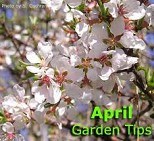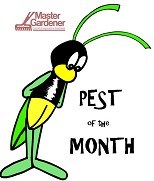Spiders are unfairly criticized animals. They have been victimized by a few poisonous species, condemned when found around the home and demonized at Halloween. However, spiders are finally gaining recognition as important beneficial predators of insect pests in the landscape as well as in farms, orchards and forests.
The fear of spiders (e.g. the ‘Little Miss Muffet Syndrome’) is usually a learned response from others, often learned in childhood. Most spiders are shy animals that run away from humans. The vast majority pose no danger at all. Even the poisonous spiders – notably the black widow and the brown recluse – are not aggressive and frequent undisturbed area. Spiders only bite people in self-defense or when defending their eggs. In fact, research shows that spiders are often blamed by bites caused by fleas or other pests.
Many people notice an influx of spiders around the home in the fall. This is the time of year that some species mature. Mating must take place in order for egg laying to occur before the adults are wiped out by freeing temperatures. Many male spiders during this time leave their normally protected shelters to venture about in search of female spiders. Yes, they may walk near you but spiders have dreadfully poor eyesight and probably don’t realize that they are near you. If found indoors, just scoop them up and usher them outdoors! Use a broom to direct the spider toward a doorway or invert a large jar over it and slide a piece of paper under the mouth of the jar to trap the spider within and then release it outside.
All spiders are generalist predators. This benefits the IPM practitioner in that they provide important biological control. Research on the forest floor has shown that 78% of all the pest insects preyed upon were consumed by spiders. Other research has determined that spiders can reduce pest damage in garden situations by 60%-80%. Research on biological control of the azalea lacebug has also shown that the dominant predators of immature lacebugs are spiders. Therefore, it is to our benefit to safeguard spiders as much as possible to benefit from this ‘free’ pest control.
Spiders are grouped by entomologies according to how they catch their prey – either through webs or by hunting. The diet of web weaving spiders is primarily insects while hunting spiders feed on both insects and other spiders. Both types are common outdoors and both types should be encouraged. A study in a California vineyard showed eight types of spiders, representing six spider species, on the one site. Accordingly, a diversity of spiders is desirable in the landscape, as different spider species have different foraging schemes (hunting on the group versus on foliage for example) and feed at different times of day. Most spiders feed on insects smaller in size than they are, consuming any lifestage of their insect prey (eggs to adults). They also kill more insects than they actually eat. They themselves are preyed on by mantids and lizards.
Research has additionally found that spiders also influence pest populations in ways other than direct consumption. The presence of spiders can actually cause other insects to forage elsewhere, to stop feeding and even to drop off plants completely. From the perspective of good biological control spiders become active quite early in the growing season, before other beneficial insects (e.g. parasitoids) build up to noteworthy levels and stay at the site until late in the season.
Encouraging spiders in the landscape is relatively simple. The best way to maintain plentiful spiders in the landscape is not to use pesticides. Spiders are very sensitive to pesticide sprays, particularly to pyrethroids. Therefore, if pesticides are necessary, only spot treat plants. Spot treatment is an IPM technique that maintains beneficial insects by only treating plants that have damaging levels of pests. When only plants are treated where the pest problem is severe, beneficials survive on untreated plants. Another way to encourage spiders is to apply and maintain mulch around landscape plants. Mulch provides a hiding place for spiders, buffers temperature extremes and supports an alternative food source of detritus feeders to sustain them during times of limited pest prey.
Re: Common Sense Pest Control Quarterly. XBI:1Winter2000. P>E>S>T> Newsletter 8:16 October 2000. Reprinted from Landscape IPM notes, November-December 2000.




